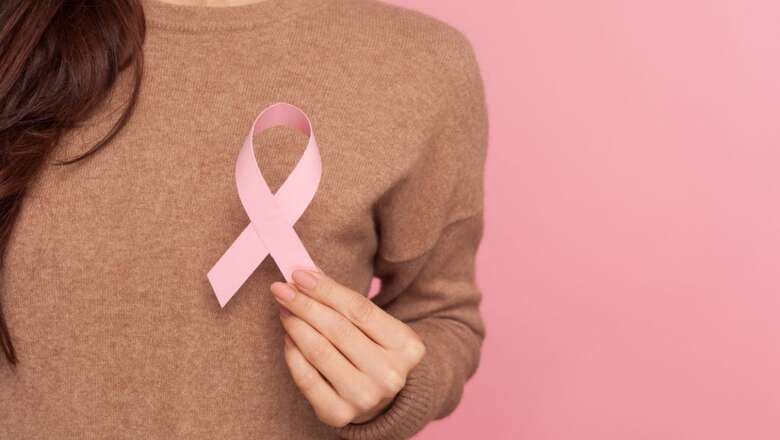
views
Breast cancer can present with various signs and symptoms beyond a noticeable lump. These include breast pain, nipple changes, skin dimpling or puckering, nipple discharge, redness or swelling, changes in breast size or shape, and persistent breast or nipple itching.
Bloody discharge from nipple
Retraction of nipple, flaking skin around nipple
Erythema i.e., redness of skin of the breast, bruising look like red or purple or bluish tint
Arm pit / underarm swelling because of lymph nodes being affected
Skin texture change like thickening, Dimpling of skin (like an orange peel)
Tenderness / painful breast or nipple area
Size and shape changes of the breast
Rule of Thumb to follow:
Between:
Age 20 – 30 years: Breast self-examination / awareness
Age 31 – 40 years: Clinical Examination by an Oncologist every 6 months
Age 41 – 55 years: Annual Mammogram
Beyond 55 years: Mammogram once in two years
Remember:
- Many conditions can cause breast lumps and most common of these are fibrocystic changes or breast cysts. These mostly happen in young women and can cause lumps, pain, etc. and are not cancerous.
- Higher risk categories include men / women with genetic mutations like BRCA, PTEN, TP53 etc. Certain families have several members with cancer. Individuals with strong family history should visit an oncologist/ geneticist to get themselves evaluated. Wherever necessary, after discussing the pros and cons, a blood test is advised to confirm whether there is a genetic link.
- Personal history of radiation in past to chest for Hodgkin’s disease and certain conditions like atypical hyperplasia or lobular carcinoma in situ increases risk. Regular checkups are recommended in such individuals.
- Most women have breasts which feel lumpy. This can also change during periods, when kids are born or while there is weight change or with age,and this isnot a worrisome sign.
- India has younger women (between 35-50years) developing Breast Cancer. Exact reason remains unclear. However, some researchist are also exploring correlation to IVF and hormone replacement therapies.So,it’s important to be self-aware and get yourself examined regularly.
- 1% of breast cancer is reported in men and so this is not just a woman-centric disease.
- Breast cancer is always treatable and, in most situations it is curable.Please don’t waste time in exploring unconventional treatment options and losing the benefit of early diagnosis and early treatment when cancer remains curable.
- Newer diagnostic modalities include-liquid biopsies, molecular imaging and imaging biomarkers which make treatment more focused and rewarding.
- Certain gene testing assays (like OncotypeDx, Mammaprint), guide us to whether we can only give hormonal therapies and not chemotherapy.
- We are moving towards an era of organ-conservation and so mastectomy is done rarely only when there is locally advanced cancers. In most situation, we recommend breast conservation which has positive psychological impact in women who have long healthy life post treatment.
- Newer drugs and newer targets is another promising area in breast cancer with antibody-drug conjugates and immunotherapy taking very important role. These newer ammunitions work very well in certain very advanced cancers as well.
- Breast Cancer Survivorship and people living with cancer, that means who have had treatment in the past and now doing well is the most reassuring aspect of an oncology practice, when one meets happy families who have successfully dealt with cancer and done well!



















Comments
0 comment